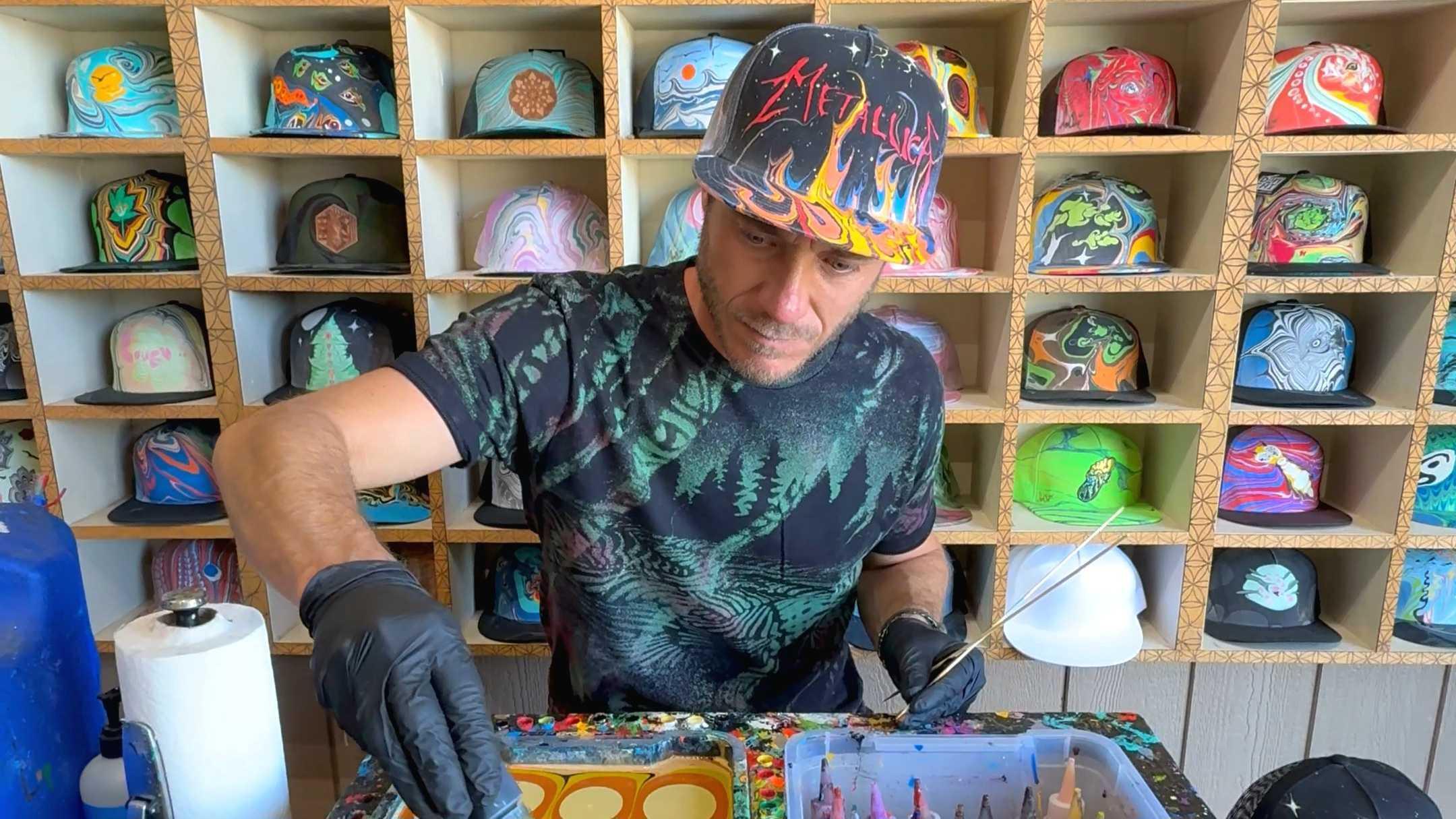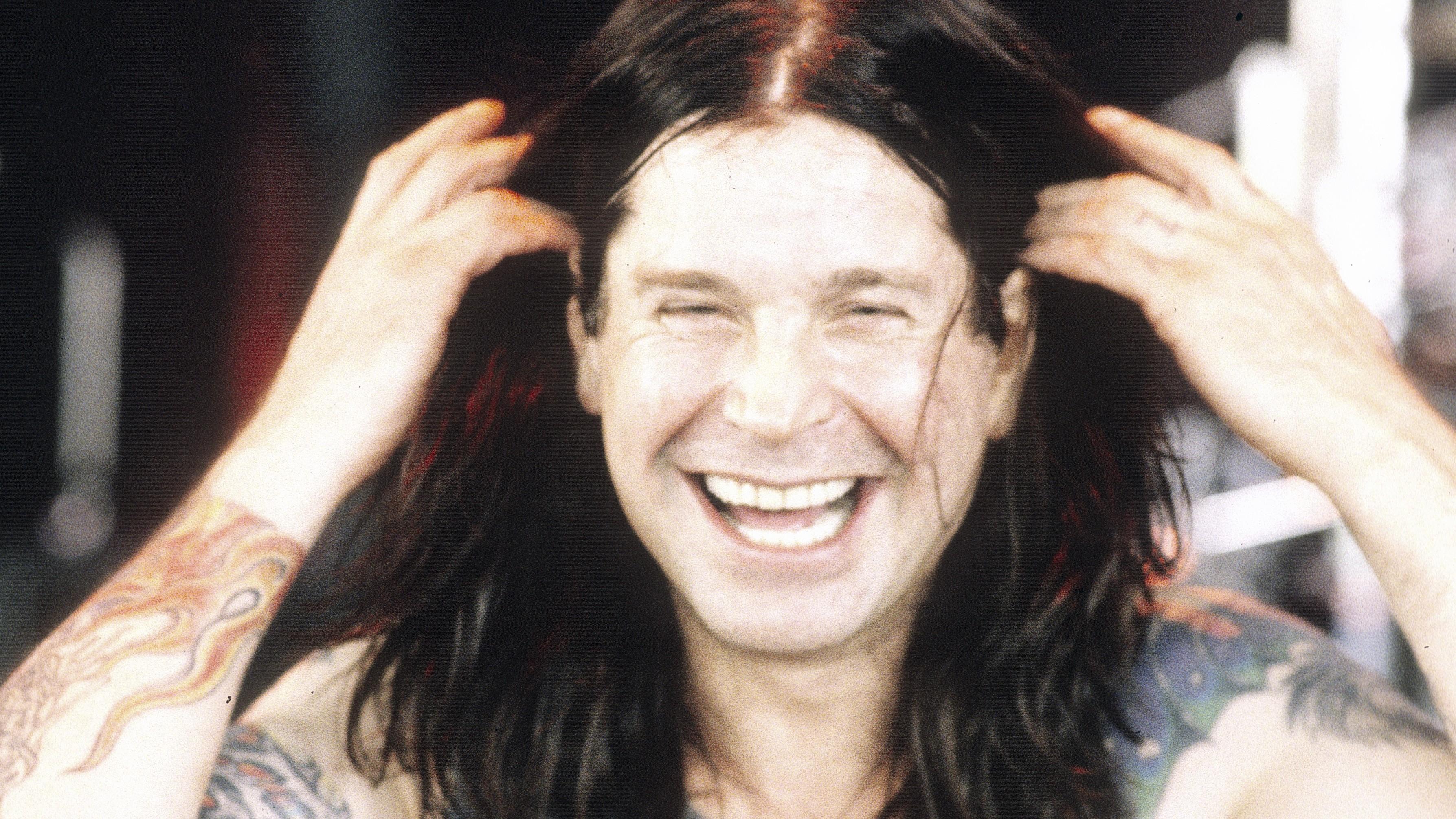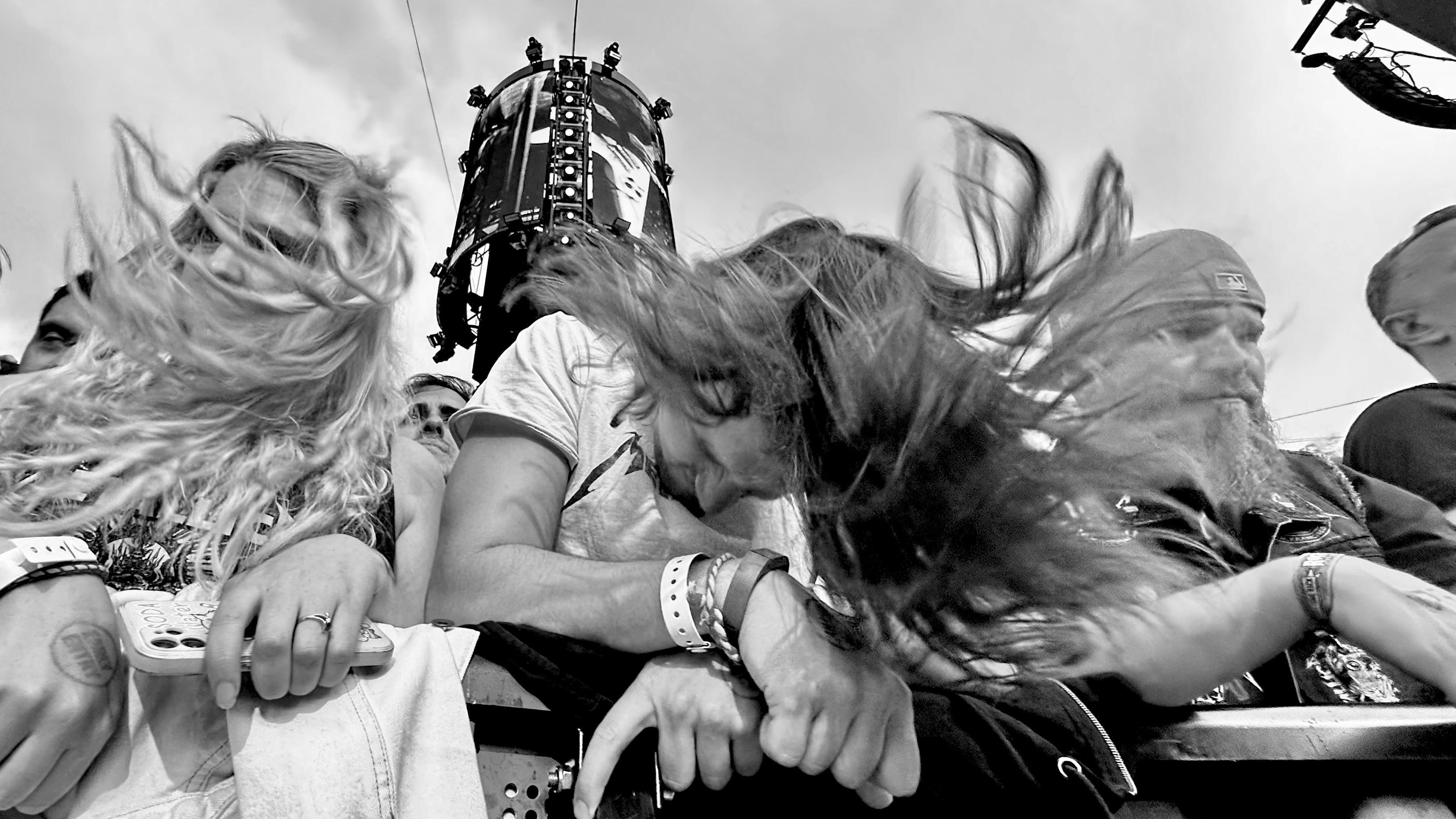
Renaissance Man
Dominic Padua (aka Dom Chi) does many things very well, including the art of marbling. Steffan Chirazi visits his Sebastopol, CA, studio to learn more.
Oct 26, 2020
Intertwining spirituality with an innate sense of curiosity and appreciation of nature, Zeb Love is an artist motivated by literature whose journey has no defined paths. Steffan Chirazi speaks with the wolf as man.
Within minutes of speaking with him, you know that Zeb Love is a very unique and somewhat isolated artist of his own volition. Having grown up in “the corn fields of Illinois,” Love’s connection with nature is abundant in the work he has done thus far for a huge range of artists from Primus to Childish Gambino to a series of collaborations with The Avett Brothers. And whether a jaunty fox, dark Lord goat, or space-infused hare, you can instantly see how real the connection is between him and nature. When Zeb speaks, his voice is deep, soft, and deliberate, coated with a veneer of deeper thought and reserve. He is someone who values words heavily, and Zeb is likely to have found influence for certain pieces as much in a book as, say, an album. Zeb projects as older and wiser than his 32 years, again something which screams from his work, and also carries a strong desire to be left alone to forge his own path and create in his own time and space. We spoke for around 30 minutes one Wednesday afternoon, and by the way, in case you’re wondering, yes: Zeb is the son of Mr. & Mrs. Love and his first name is actually Zebulon, after the Grandpa on The Waltons, which was a favorite TV show of his parents.
Steffan Chirazi: So first of all, let’s get a little bit of the biographical stuff in, because there is a relationship between nature and what you do. So maybe talk about how that fostered itself and developed?
Zeb Love: I grew up out in the country in the Midwest surrounded by pine trees and the woods, and just spent my time out there when I was younger with my brothers and sisters, collecting frogs, getting night crawlers, going fishing, and all that stuff. I think it was around high school or so when I found a copy of Walden by Henry David Thoreau [philosopher who believed in transcendentalism and interacting spiritually with nature – ED] in a thrift store. It was, like, 50 cents, and I read it and read it again. I just liked the way that he described the simplicity of what nature is and simplifying your life down to the essential things and not being distracted by the things that don’t matter. It really rung true for me and kinda helped me guide what I cared about in life and what I wanted to focus on. When you’re that young, you don’t really have a lot of life experience, but there was something about it that made sense. So then I delved into some Ralph Waldo Emerson, he’s a naturalist philosopher. He’s one of my favorites too. He wrote a book called Nature.
SC: What makes you pick up a book like Walden in the store?
ZL: Well, I loved the cover. The cover was like an old woodblock print of a cabin and some trees, and it was sort of black and green. That’s all it was. I just thought it was cool.
SC: Great. As a kid there’s obviously animals or birds catching your eye, right?
ZL: I grew up with cats and we had horses. My mom was really into horses, she was an animal lover too, so she kind of just shared all that with us. We’d find some stray cats and take ’em in and feed ’em. Then just beauty of birds and how they just “are” struck me, they’re so free but they’re also always collecting food or taking care of their future, so I don’t know. That kinda stuff just melded together, and I guess I was mostly not aware of what I was taking in, I just kind of took it in. This was probably when I was around 7 or 8, and it germinated into what I am now.
SC: What other art were you coming across, both visual and aural, that was exciting you?
ZL: Well, I was raised in a Christian home, so I love the imagery of the Bible. Then there’s Gustave Doré, he’s a famous etching/wood-engraving artist [illustrating such works as Edgar Allen Poe’s “The Raven” and a series of 241 wood engravings for a French edition of the bible – ED]. I got a book of his and just pored over it. I loved, loved, what he could do with one color; I thought it was so strong and so beautiful, so I took that in. I didn’t really know how to draw back then, so I would just do Photoshop collage work with photos I’d find on the internet. I taught myself how to use Photoshop, and then I would start asking bands if I could design their t-shirts or whatever, and I would kinda hustle my way in there. Got some local bands, I drew flyers and whatnot. And all the while, after school I’d go home and work on my own personal collages.
SC: What switched you off from Photoshop to actually teaching yourself to draw and to paint?
ZL: Kind of by accident. One of my friends here is a tattoo artist who’s had an art show. And the stipulation for the art show is that it must be all original work. So something that’s not on computer and not digitally printed. So I figured I’d draw something and silkscreen it, because that’s affordable and I can do that in my living room. So I did that. That was back in 2009 or ’10. I loved it, so I just kept doing it. You can’t screen print digital images, so I had to find a way to draw them, which got me on a drawing kick and out of the digital stuff I was doing. I put all my eggs in the drawing and silk-screening basket, and that’s where I’ve been at for about the last ten years. Just recently I started picking up a paintbrush, and so now I get deeper and deeper into the realness, the real esthetic of something made by hand and physical. You mix the ink yourself, you screen print yourself, you’re dirty. I love the tactile, the realness of that kind of thing.
SC: Would I be right in saying that many of your pieces are not just mere images, but that you are actually expressing some pretty deep thoughts?
ZL: I think so. I mean, I’m trying to at least. I love the universe, I always try to hide a moon somewhere because I just love the way it looks and what it symbolizes, so sometimes, yeah, there’s some deep attention with things. Sometimes I’m listening to audio books while I’m working…
SC: That’s crazy. You work while listening to audio books? That’s insane because I can listen to music while I work, but I cannot work and listen to audio books at the same time. I cannot make that division. That’s fascinating.
ZL: I love it. So for the Metallica, project I listened to the entire Dune audio book.
SC: That’s fascinating, and seeing as we’re here, let’s talk about that image.
ZL: It kinda goes back to Gustave Doré and his imagery. I love the “good versus evil” type deal, the constant struggle, or how there’s always something nipping at your heels, or some kind of dragon you gotta face. Maybe you’re running from your demons, and sometimes you gotta just face ’em in order to progress. So that image is about the lion – being obviously some of that good power – injured and damaged, but he’s nonetheless fighting the thing that is bigger and scarier, so you know that he’ll win regardless. It’s better to stand up to something like that than just live in fear the rest of your life hiding from it, you know?
SC: Earlier, you mentioned that you were raised in a Christian household and then you found your own path. Is it fair to say… well, let’s look at The Avett Brothers, the New Year’s Eve poster with the owl, as that owl is very omnipotent. Do you think some of the animals that you also loved in nature are taking on the guise of what perhaps Christians would consider “gods?”
ZL: I never really thought about it, but it does make a lot of sense. Maybe that’s why I’m transferring all that old stuff to a new box, and the box apparently is just nature and universe and yeah, I guess that’s pretty right.
SC: Okay, let’s touch on some of the music you like.
ZL: I listen to some folk stuff here and there, like Johnny Cash, Ray Wylie Hubbard, then there’s The Rolling Stones, Deftones, Sparklehorse, The Cult, Tool….
SC: I’m also getting the impression that music is not a main stimulus for your work. Would that be right?
ZL: Yeah. It’s usually never the stimulus.
SC: So let’s say when you get a Queens of the Stone Age or even a Primus commission, what’s your starting point of reference when you start to create a piece for them?
ZL: To be honest it’s a lot of floundering around. I go through old sketchbooks, see if there’s anything there. I go through the band’s catalogue and write down song names that strike a chord with me. I don’t generally listen to the music. I mean, Metallica’s different because I grew up with them. That was the first band I learned how to play their music on my guitar, so Metallica’s definitely special in that sense, but for most other bands it’s just usually kinda what I’m into at the moment. And that can be literature or conversations with friends or whatever.
SC: How long does a piece take you to complete on average, and are you someone who works on several pieces at once or one at a time?
ZL: Several pieces at once, especially through all this pandemic stuff. Usually, the more pieces I have going on the better things go, because there’s a better flow. But it really depends, like this Metallica one I started back in March when I was back home in Illinois visiting family and I was there for a few months. I screen print everything myself, so I gotta do the color separations, mix the inks, and do all the printing and signing and numbering, packaging, and that stuff takes another six days on and off. At the end of the day, when the piece is done and shipped, it’s a good feeling, for sure.
SC: Wow, so, and talk to me a little bit about the materials you’re using to create this and also the scale?
ZL: Ninety-five percent of the posters are 18” x 24”. Materials? Usually I’ll start with pencil and paper, get a couple crude ideas down, and then I’ll scan that in and keep playing around with it. I’ll eventually maybe take some reference photos of myself or other friends or nature with my camera, and then I’ll start digitally painting, or black and white value, the structure and composition. Once that’s figured out, I can start doing line work, colors, and build up the shape. Once all that’s done and it’s approved by the manager and the band, then I can begin the screen printing process which is, I gotta go in my print shop and mix each color by hand and match the colors.
SC: Just so I understand, the actual composition is roughly hand-sketched, that is scanned in, the image is then augmented digitally, but the ending color and the ending print is decidedly analogue because it’s come through your own hand painting/mixing and printing press. Is that right?
ZL: Yes, that’s correct.
SC: And you have your own press and your own space, right?
ZL: Yes.
SC: Incredible! I bet you never leave your studio! And again, there is an analogue root to everything, and then it goes digital, and then it comes back out analogue. So, analogue, digital, analogue, if you were to be really simplistic about it?
ZL: Yeah. That’s definitely correct. It always starts out analogue in my sketchbook, and then once I have something I believe in, I’ll take it to the next step.
And with that, I thought it’d be interesting to ask Zeb if he’d mind sending a list of books which had influenced his work. He obliged within an hour of our chat ending. By way of conclusion, here it is:
Henry David Thoreau - Walden
Ernest Hemingway - Islands in the Stream
Kurt Vonnegut - Breakfast of Champions
Robert M. Pirsig - Zen and the Art of Motorcycle Maintenance
John Steinbeck - Travels with Charley in Search of America
Frank Herbert - Dune
Ralph Waldo Emerson - Self-Reliance
Jack Kerouac - The Dharma Bums
Alan Watts - Just So
Samuel Adoquei - Origin of Inspiration

Dominic Padua (aka Dom Chi) does many things very well, including the art of marbling. Steffan Chirazi visits his Sebastopol, CA, studio to learn more.

What you are diving into here is my personal journal with regards to the Back to the Beginning extravaganza. Much of it was written off-the-cuff, and the sheer magnitude of the event means that even now there are still pieces of “thought” swirling in the ether and making brain fall by the hour. These recollections, emotions, and observations are shared reflectively over three separate entries after the event and are split between an initial “post-event download” and then a more chronological reflection on our time in Birmingham…
